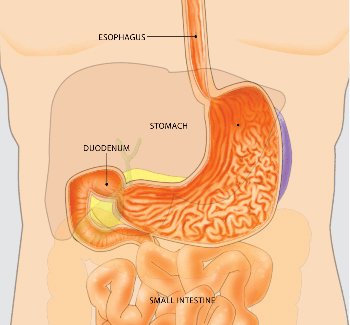
GERD Uncovered: Common Causes and Key Symptoms
Introduction: What Is GERD?
Gastroesophageal reflux disease (GERD) is a chronic condition that occurs when stomach acid flows back into the esophagus, irritating its lining. While occasional acid reflux is common and generally harmless, GERD is a more persistent and often disruptive form of reflux that requires long-term management. Left untreated, it can lead to complications like esophageal damage, ulcers, or even precancerous changes.
Millions of people experience GERD symptoms each day, but not all recognize the underlying cause of their discomfort. Understanding how GERD works, what causes it, and what symptoms to look out for can help individuals take control of their digestive health before complications arise.
Understanding the Mechanics Behind GERD
To comprehend GERD, it is helpful to understand how the digestive tract functions. After swallowing, food moves down the esophagus and into the stomach through a muscular valve called the lower esophageal sphincter (LES). The LES acts like a gate—opening to let food in and closing to prevent stomach acid from entering the esophagus.
In GERD, this valve weakens or relaxes inappropriately, allowing acid and sometimes bile to rise into the esophagus. Because the esophagus lacks the protective lining that shields the stomach from its acid, this backflow can result in irritation, inflammation, and damage over time.
Common Causes of GERD
GERD often develops from a combination of lifestyle habits, medical conditions, and physical abnormalities. While no single cause applies to everyone, the following are the most recognized contributors:
Weak or Dysfunctional LES
When the lower esophageal sphincter doesn’t function properly, acid reflux becomes more likely. LES weakness may be due to anatomical issues, certain medications, or age-related changes in muscle tone.
Obesity and Excess Weight
Carrying extra weight, particularly in the abdominal area, increases pressure on the stomach. This pressure can cause the LES to open, allowing acid to escape into the esophagus.
Hiatal Hernia
A hiatal hernia occurs when part of the stomach pushes through the diaphragm into the chest cavity. This anatomical change can affect the LES and increase the risk of reflux.
Diet and Eating Habits
Spicy, fatty, or acidic foods are common triggers for GERD. Carbonated drinks, caffeine, chocolate, and alcohol may also relax the LES or increase stomach acid production. Overeating or eating too close to bedtime further elevates the risk.
Smoking
Tobacco weakens the LES and reduces saliva production, which would otherwise help neutralize stomach acid. Smoking also slows down digestion and increases acid production in the stomach.
Pregnancy
Hormonal changes during pregnancy, coupled with pressure on the stomach from a growing uterus, can lead to reflux, especially in the third trimester.
Certain Medications
Drugs like antihistamines, calcium channel blockers, sedatives, and painkillers may reduce LES strength or delay gastric emptying, both of which contribute to GERD symptoms.
Recognizing the Symptoms of GERD
GERD symptoms vary in intensity and frequency, and some people may not associate them with acid reflux. Knowing the full spectrum of symptoms can help ensure earlier diagnosis and treatment.
Typical GERD Symptoms
- Heartburn: A burning sensation in the chest, usually after eating or when lying down
- Regurgitation: Sour or bitter-tasting acid backing up into the throat or mouth
- Difficulty swallowing (dysphagia): Feeling like food is stuck in the throat or chest
- Chest pain: Often mistaken for a heart issue, this may be related to acid irritation
- Chronic cough: Especially when it occurs at night or doesn’t respond to cold medicine
- Sore throat or hoarseness: Caused by acid irritating the throat and vocal cords
- Lump-in-throat sensation (globus): Persistent feeling of something in the throat
Atypical or Silent GERD Symptoms
In some cases, GERD presents without heartburn. Known as “silent reflux,” this version may involve:
- Persistent laryngitis
- Asthma-like symptoms
- Chronic sinus infections
- Earaches
Because GERD can mimic other conditions, it’s essential to see a healthcare provider for a proper diagnosis.
Risk Factors That Worsen GERD
Several lifestyle factors and health conditions can exacerbate GERD symptoms:
- Eating large meals or lying down soon after eating
- Wearing tight clothing that puts pressure on the abdomen
- Stress and anxiety, which can affect digestion and LES function
- Delayed gastric emptying from gastroparesis or other conditions
- Aging, which naturally weakens the LES over time
Identifying and modifying these risk factors is an essential part of managing GERD symptoms.
When to See a Doctor
If occasional reflux becomes frequent (two or more times per week), it’s time to consult a healthcare professional. Persistent symptoms, difficulty swallowing, unexplained weight loss, or blood in the stool may indicate complications such as:
- Esophagitis: Inflammation of the esophagus
- Esophageal stricture: Narrowing caused by scar tissue
- Barrett’s esophagus: A precancerous change in esophageal lining
- Esophageal cancer: A rare but serious risk if GERD is left untreated
Early diagnosis and treatment are key to preventing long-term damage.
Diagnostic Tools for GERD
Several tests are used to confirm GERD and rule out other conditions:
- Upper endoscopy: A camera-tipped tube is inserted through the mouth to examine the esophagus and identify any damage.
- pH monitoring: A small device measures acid levels in the esophagus over a period of 24 to 48 hours.
- Esophageal manometry: This test evaluates muscle contractions and LES function.
- Barium swallow: An X-ray test where the patient drinks a contrast liquid to highlight abnormalities.
Conclusion: Taking GERD Seriously from the Start
GERD may begin with mild discomfort, but it has the potential to lead to serious health problems if ignored. By understanding its causes and recognizing its symptoms early, individuals can take proactive steps to manage the condition and prevent complications.
If you’re experiencing regular acid reflux or any of the symptoms described here, consult with a healthcare provider. Lifestyle changes, dietary adjustments, and medical treatment can all play a role in reducing discomfort and preserving long-term digestive health.
